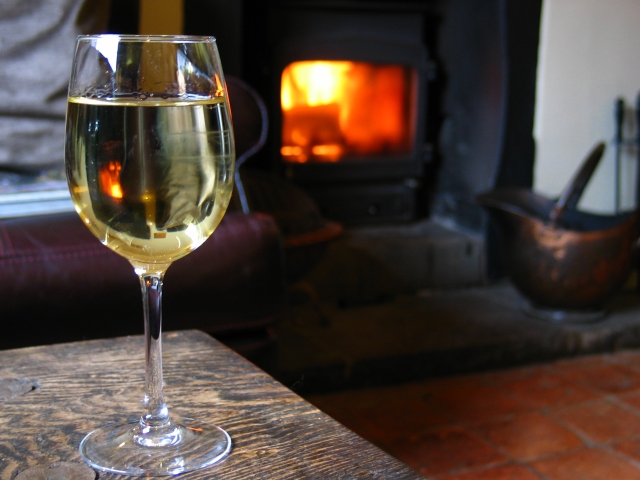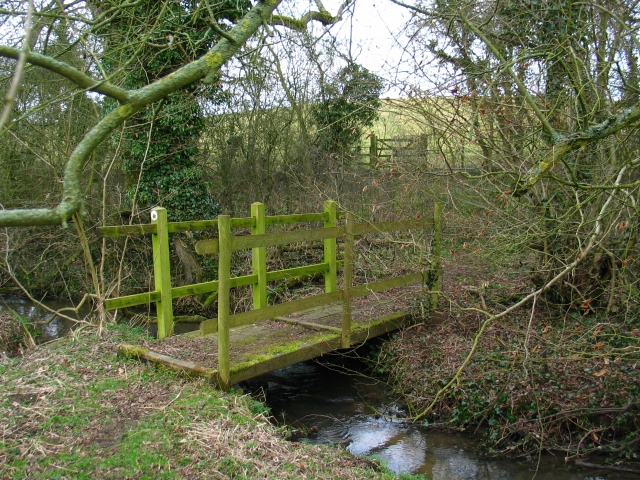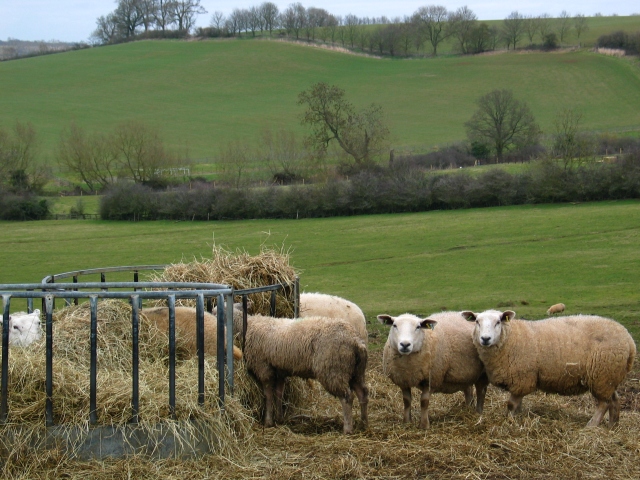As the days grow slightly longer, and with my Welsh Castle Quest in mind, I’m trying to undertake a few 10-or-more mile walks. Of course, if I can make them coincide with some form of medieval theme, I will. I love to wander across the countryside, far from the madding crowd, where you can really feel a connection with the past. There’s something quite magical about actually travelling somewhere on foot: to have a starting point and a destination. After all, that’s how most people got about in the Middle Ages. I find it gives a totally different perspective on an area you’d normally only see from the road, and you can discover so much more about the land and its history. You feel a part of it. And a part of then.
So yesterday the journey of choice was from Fawsley Church in Northamptonshire to my mum’s home near Banbury. It took in two deserted medieval villages and their solitary churches, and some lovely views.
The Church of St Mary stands alone in an elevated position on the Fawsley Estate, but it was once the centre of a bustling village, lost over time to sheep farming, landscaping and the building of the nearby Tudor manor, now a country hotel. Fawsley seems to have been a thriving community in 13th Century, as is shown by Henry III granting it a Market Charter in 1244, but its fortunes declined after the arrival of the powerful Knightley family in 1416. They were great sheep farmers, so they enclosed the lands and the subsequent depopulation of the village became such that by 1524 only 7 people were listed as paying subsidy to Henry VIII. It made the Knightleys pretty unpopular.

The effigies of Sir Richard Knightley and his wife on their splendid alabaster tomb
Inside the church are some interesting finds. A superb, free-standing alabaster tomb of Sir Richard Knightley, who fought with the Lancastrians at the Battle of Bosworth in 1485 and lived on until well into Henry VIII’s reign, stands by the south aisle, and behind this is the high-sided Knightley pew, designed to hide the family from the rest of the congregation. However, its position meant that they couldn’t see what the priest was doing at the altar, so they had a ‘squint’ (a big square hole!) put into the south wall of the chancel so they could see what was going on.
Away across fields and through the odd spinney, we came to another deserted medieval village, Church Charwelton. This seems to have followed a similar story to Fawsley, with the Andrews family keeping 1200 animals by 1539. There remains a spectral presence in the landscape here, beside the lonely church, with the tell-tale ‘lumps and bumps’ of the former settlement’s earthworks still prominent. It’s quite haunting to wander in the footsteps of these ancient villagers, and I could almost hear their voices.

Remnants in the earth of the deserted Charwelton with its church looking on
Onwards through ever quiet rolling landscape, and soon it was time for a welcome stop at a pub in the very un-deserted village of Eydon. I always seem to gain a massive energy boost if I stop half way through a long walk for a huge glass of wine! With that gorgeous wood burning stove I could have happily settled down there for the rest of the afternoon, but there was a fair distance still to go.

Time to refuel

The last leg

Crossing a babbling stream

It wasn’t their fault the villagers were turfed off the land…
The remainder of the walk took us across a landscape that soon, sadly, will be less peaceful and undisturbed when it falls victim to HS2, which will cut straight through this green and pleasant land. The madness of modernity strikes again. But for now, it’s a tonic to stroll across green fields and running streams, before the last climb uphill to Thorpe Mandeville and the promise of hot tea and my mum’s warm cheese scones.
Enjoyable read Alli and great photos, thanks for sharing.
LikeLiked by 1 person
You’re very welcome, Ally. Thank you, and glad you enjoyed it.
LikeLiked by 1 person
Another great post Alli – I can’t imagine why the Knightley’s were so unpopular, I thought everyone loved sheep?
It was a lovely walk, but I still think we should have stayed in the pub and called a taxi!
LikeLiked by 1 person
Lost villages are fascinating. Apart from the well recorded ones, it’s worth looking close to existing habitations for the familiar humps and bumps.
LikeLiked by 2 people
Yes they are really fascinating, John. It makes me want to find more so I’ll have to get looking then. I know you’ve got a well-known one round your way – Wharram Percy, isn’t it?
LikeLiked by 1 person
Never seen it but it’s on the list!
LikeLiked by 1 person
You’ve got a list too – excellent! It’s firmly on mine as well.
LikeLiked by 1 person
There are quite a few to the NE of Banbury
LikeLiked by 1 person
I’d better get my walking boots back on then.
LikeLiked by 1 person
There is one right on the canal near Fenny Compton at Wormleighton – the canal is going through a massive loop there because at that stage it was built on the cheap avoiding the additional costs of locks
LikeLiked by 1 person
Thanks for that. It’s good to know where to find them.
LikeLike
2 miles east is another one called Stoneton i think
LikeLiked by 1 person
…thanks for that too. I can feel another cross country wander coming on…
LikeLike
Mmmm – warm cheese scones with lashings of butter! 🙂
So, the clearances (for sheep) didn’t just happen in the Highlands after all!
LikeLiked by 1 person
Indeed not, it seems to have been rife down here too. And lashings of butter is an absolute must… 🙂
LikeLike
proper butter at that! 🙂
LikeLiked by 1 person
Absolutely – anything less would just be wrong! 🙂
LikeLike
Nice. I agree that the best views often come on foot.
LikeLiked by 2 people
Very much so, it’s a wonderful way to travel and to explore, hence my great Welsh castle wander this summer! Thanks for reading.
LikeLiked by 1 person
I’ll be adding Fawsley to my list. The Knightley tomb is rather splendid with its surviving colours.
LikeLiked by 1 person
It is pretty impressive and still surprisingly colourful for its age. Fawsley is a nice area to explore. Nice to swap places for our lists!
LikeLike
I am not one to seek out grand tombs as a rule, but this one does look particularly spectacular. If you are Tingewick-based, the little church at Lillingstone Dayrell is one to see if you haven’t already. Out in the fields and just so tranquil.
LikeLiked by 1 person
Me neither, but as you rightly say, some of them are worth it. Thank you for another great steer! I am Tingewick based – although normally no one has heard of our village! I know the church at Hillesden near Gawcott is very historic and worth a visit, but Lillingstone Dayrell is new to me. I’ll check it out this weekend. Many thanks! Have a lovely Friday.
LikeLike
Hillesden is is real surprise.. well named as the Cathedral in the Fields. 🙂 I’m Waddesdon way… so I know the area, even Tingewick 😉
LikeLiked by 1 person
Oh wow – you’re only down the road! Fantastic! We should have a wander round the fields one day. Hillesden is a bit of a hidden gem, indeed, especially as there’s not much else to the hamlet. But worth a visit.
LikeLike
I know your village as it happens
LikeLiked by 1 person
Good grief! Someone else who knows my village – it must be more famous than I’d realised!
LikeLiked by 1 person
I was at boarding school nearby three and a half decades ago!
LikeLiked by 1 person
Oh wow – which school was that? I bet the area is a bit different from when you were at school.
LikeLike
I should imagine it is. Stowe.
LikeLiked by 1 person
Ah yes, that’s just up the road. I walk around there a lot. Nice area.
LikeLike
You are going to be practically right on HS2 😦
LikeLiked by 1 person
Sadly, that’s true. It’s even worse for my mum in Thorpe Mandeville – it’s just at the bottom of the village. The madness of modernity. 😦
LikeLike
dreadful
LikeLike
Do you know what? Today I was in the town and walking past the mental health charity shop SCOPE. Through the window I saw this really nice framed photo of lift bridge 171 on the canal (it’s near Bodicote). So, I bought it; have nowhere to hang it. But it reminds me of already how changed that area is – all new housing going up now.
LikeLike
Oh that’s so true, and it’s happening everywhere. Sometimes I think, now they’re even building on green belt land, that in the end the whole of the south will end up as one big housing estate. That’s why I’m planning on moving up to Northumberland! So I hope you find somewhere to hang your picture of bridge 171, then at least it’ll stay alive in a memory.
LikeLike
used to be so nice along banbury fringe
I am talking 2015 not 1915
LikeLike
I don’t know that bit very well. Thanks for the link – I’ll take a look. I guess if it was only a few years ago it’s done well in the great scheme of modernity.
LikeLiked by 1 person
I came here from Stuart’s blog, and I agree – you’re a great writer! Thanks for taking us along for the adventure.
LikeLiked by 2 people
Thank you so much for visiting, and for your kind comments! You’re most welcome to come along on some medieval adventures any time!
LikeLiked by 1 person
Great post – cake here from your Hubs’ post – and glad I did
LikeLiked by 1 person
Thank you for reading and for your kind comment. You’re most welcome, and I hope you enjoy the medieval adventures!
LikeLiked by 1 person
Well I am
Really glad to connect via blog-
LikeLiked by 1 person
When I read your writing I always feel as if I’m sitting with you, all comfy and toasty by a warming fire, and listening to someone who lived back in those great times telling me one of those great stories that that’s been passed down through generations. It’s lovely! Like you said, a tonic. And I think it’s such a nice, romantic idea to take walks like this and experience the area (as much as you can) from the perspective of the times. I know that I’m supposed to celebrate modernity as a sign of the constant continuation of life, but it is a shame that it means the loss of the charms that places like these used to hold. Thank you so much for sharing these places and for doing so in a way that brings back some of that charm!
LikeLiked by 1 person
Thanks Lindsay for such very kind comments. If that’s how you feel when you read my posts, I’m over the moon because that’s how I wanted people to feel – especially the warming fire bit! I’m glad you enjoyed reading about our wander through some lost medieval villages, and if I can bring back some of the magic through my writing then I’m achieving what I set out to do. Thanks so much for reading, and for your kind words – it means a lot. 🙂
LikeLiked by 1 person
You can count yourself exceedingly successful! Visiting your site is truly like stepping back into time. I love to come here with a cup of tea and when I have good time to spend. I thank you for that! And I meant to mention: I loved the story of Knightley, his pew, and his peep hole. I think it’s funny and such neat insight into the lives of people back then. I think history can sometimes feel a bit stodgy when it fails to include those personal little bits! It’s one of the great things about your writing! You tell the stories of history in such a way that allows you to see the people as people. It’s very cool! I hope you have a chance to get out and do some wandering this weekend!!!
LikeLike
Thanks Lindsay, I’m immensely pleased to know my blog makes someone feel like that. It’s what I was hoping for. It means such a lot to me. No wanderings today sadly as I’m off to a uni tutorial, but there is an anniversary story for you to read. So put the kettle on and come and sit by the fire! Thanks again, and have a lovely weekend.
LikeLike
Haha! I have my tea ready now…
LikeLiked by 1 person
Like it… 🙂
LikeLike
Ah walking – my favourite way of getting around but then comes trains which is another story. That glass of wine and and the fire look so tempting…. glad you were able to pull yourself away from it…. perhaps you knew the scones were in the oven!
LikeLiked by 1 person
Scones are, indeed, a big pull, Albert! Walking is my favourite way of getting around too, and it’s nice to meet a fellow wanderer! 🙂
LikeLiked by 1 person